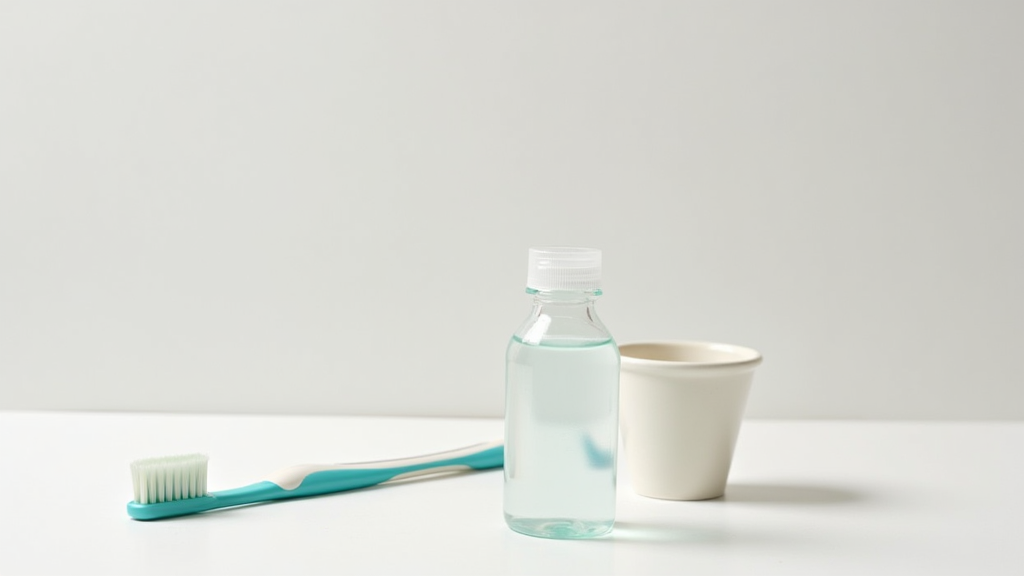 Rinsing Your Mouth With Hydrogen Peroxide: What You Need to Know.
Rinsing Your Mouth With Hydrogen Peroxide: What You Need to Know.
Rinsing your mouth with hydrogen peroxide is a practice that has been discussed in various health forums and dental care discussions. It’s an affordable option some people add to their oral hygiene routine. When used correctly, it may help reduce bacteria and promote healing for minor mouth irritations. However, understanding how to use hydrogen peroxide safely is important to get the benefits without causing harm.
Step 1: Understand the Basics of Hydrogen Peroxide
Hydrogen peroxide is a solution that appears water-like and is most commonly found in a 3% concentration for home use. In this diluted form, it acts as an antiseptic. When it comes into contact with tissues, it releases oxygen that can help kill bacteria. This simple chemical reaction is one of the reasons some people choose to use it as a mouth rinse.
Before incorporating it into your routine, you should consider a few questions:
Key Facts to Consider:
- What is the chemical composition of hydrogen peroxide?
- How does it work as an antiseptic?
- Why is a 3% concentration the standard for home use?
- What conditions might benefit from using it as a rinse?
Understanding these basics helps you decide if this is a good choice for your oral care. The potential benefits, such as reducing bacteria and soothing minor irritations, should be weighed against the risks of improper use. In addition, spending some time to check out credible sources and research studies can give you a solid grasp of how the product works and what precautions are necessary for safe application. This step is very important because a mindful approach ensures that you are not only experimenting safely but also making decisions that support long-term oral health.
Step 2: Learn Proper Dilution and Usage
Using hydrogen peroxide safely means ensuring you apply the right concentration. Even though the 3% solution is widely available, it should always be diluted before rinsing your mouth. Dilution helps reduce the risk of damaging sensitive tissues.
How to Dilute Correctly:
- Mix equal parts of hydrogen peroxide and water, or one part hydrogen peroxide to two parts water if you are more cautious.
- Do not use it undiluted as the pure concentration can be too harsh.
- Measure carefully so that you maintain a safe concentration throughout your rinse.
- Always use a fresh mixture each time to ensure maximum effectiveness.
It’s also important to note that this rinse should be used as a supplement to, rather than a replacement for, regular brushing and flossing. Taking an extra moment to confirm that you are mixing the correct proportions not only minimizes risks but also gives a boost to your confidence in managing your oral health routine.
Step 3: Incorporate It Into Your Oral Hygiene Routine
Once you have prepared the proper dilution, deciding how to add the rinse into your daily habits becomes the next step. Many people find that integrating this practice subtly into their routine works best. It can be part of your morning or evening routine, or even used as a treatment after meals if you are facing irritation or minor gum issues.
Integrating the Rinse:
- After brushing your teeth, pour the diluted solution into a small cup.
- Swish it around in your mouth for about 30 seconds to one minute. This allows the solution to reach all areas and work on reducing bacteria.
- Spit the solution out completely. It’s important not to swallow hydrogen peroxide as it can irritate your stomach.
- Finish by rinsing your mouth with plain water to remove any residual taste.
Adding this rinse once or twice a week may be enough to notice benefits while minimizing risks. For some, occasional use can help soothe minor irritations caused by canker sores or other small injuries in the mouth. By gradually introducing the rinse into your regimen, you allow your body to adjust and get a feel for its effects, helping ensure that its use remains both beneficial and safe.
Step 4: Know When to Avoid or Use Caution with Hydrogen Peroxide
Not every situation calls for a hydrogen peroxide rinse. It’s important to recognize when the rinse might not be the best option. Understanding these limitations can prevent potential side effects.
Cautionary Points:
- If you have open sores, severe gum disease, or extensive irritation, using hydrogen peroxide might worsen the condition.
- Avoid using the rinse if you have a history of sensitivity to antiseptic treatments.
- Do not use it too frequently. Overusing it can disrupt your mouth’s natural balance and lead to dryness or irritation.
- If you experience any discomfort, stop using the solution and consult a dental professional.
It is always a good idea to discuss any new oral health practice with your dentist, especially if you have underlying dental issues or concerns about potential adverse effects. Staying sharp to your mouth’s response and ensuring that you adjust your usage based on personal comfort are essential for long-term benefits.
Step 5: Maximize the Benefits with Additional Oral Care Practices
While hydrogen peroxide rinses may offer benefits, they work best when combined with other proper oral care practices. Complementary habits can help maintain overall oral hygiene and ensure you support your dental health effectively.
Complementary Practices:
- Maintain a regime of brushing twice a day to remove plaque and food particles.
- Floss daily to keep your gums healthy and prevent food from getting stuck between teeth.
- Use a tongue scraper or brush your tongue to reduce bacteria that can cause bad breath.
- Ensure you visit a dental professional regularly for check-ups and cleanings.
- After using the peroxide rinse, follow up with a water rinse to clear away any lingering solution.
When these practices combine, they contribute to a well-rounded oral care strategy. The hydrogen peroxide rinse acts as a supplemental tool rather than a stand-alone solution, supporting the routine that keeps your mouth clean and healthy. Taking extra time to blend traditional methods with new techniques can help you achieve an all-in-one approach to dental care, resulting in a smile that truly reflects your efforts.
Step 6: Common Questions & Troubleshooting
Common Questions About Hydrogen Peroxide Mouth Rinses:
Users often wonder about the frequency and safety of using hydrogen peroxide as a rinse. Here are some common questions along with practical responses:
How often should I use a hydrogen peroxide rinse?
For most people, using the diluted solution once or twice a week is sufficient. Overuse can lead to irritation or dryness in the mouth. Your dentist may recommend a frequency based on your particular needs.
What should I do if I experience discomfort?
- If you notice sensitivity or a burning sensation, reduce the frequency of use or further dilute the solution.
- If discomfort persists beyond a few uses, discontinue the rinse and consult your dental professional.
Can hydrogen peroxide rinse replace my regular toothpaste?
No, it shouldn’t. The rinse is meant to be a supportive practice in your oral care routine. It does not replace brushing with toothpaste, which provides fluoride and mechanical cleaning through scrubbing away plaque.
Is the rinse safe for long-term use?
Long-term use without breaks may cause more harm than good. It is best to use the rinse occasionally and follow guidelines provided by dental experts. Balance is key, and listening to your body will help you decide if more frequent use is appropriate.
Step 7: Final Thoughts & Next Steps
When incorporated thoughtfully, a hydrogen peroxide rinse can be a useful addition to your oral care routine. It is an accessible option that may help reduce bacteria and promote healing from minor irritations in your mouth. However, like any supplemental health practice, it’s important to use it wisely.
Your Action Plan:
- Start with a small amount of 3% hydrogen peroxide and blend it with water in the right proportions.
- Decide on a routine frequency, such as once or twice a week, to minimize any potential negative effects.
- Monitor your mouth for any signs of irritation or discomfort after using the rinse.
- If you have any existing dental issues or concerns, talk to your dentist about whether hydrogen peroxide rinses are a good fit for you.
The more you understand how each component of your oral care works together, the better you can tailor practices to support your overall dental health. Experiment responsibly and keep an eye on what works best for you. Small changes in your routine can lead to noticeable improvements in your oral health over time.
What’s one change you could make in your oral care routine to improve your overall dental health? Try adding a carefully diluted hydrogen peroxide rinse and see if it makes a difference. Always remember that consistency paired with smart choices may lead to a healthier smile.
Step 8: Additional Considerations
To further step up your oral health game, it is useful to consider additional aspects while using hydrogen peroxide rinses. Taking time to read up on expert advice and understanding the latest research on oral care can give you a boost in managing your daily routine. For example, comparing different antiseptic solutions and paying attention to reviews from dental professionals helps you make informed decisions. It is really important to measure out the ingredients accurately and use the rinse in moderation, as overuse might lead to unwanted irritation.
Moreover, supplementing your routine with a balanced diet and regular dental check-ups can work together to promote a healthier mouth. Remember that no single product is a magic solution; maintaining a routine that includes brushing, flossing, and occasional rinsing with hydrogen peroxide creates an environment where your oral bacteria levels are kept in check. This extra care often results in improved breath and overall dental well-being. Taking time to reflect on your routine and adjust based on personal experience is key to long-term oral success.
Finally, always keep an eye out for any changes in your oral health and don’t hesitate to ask your dental care provider if you have any uncertainties. Continuously fine-tuning your approach ensures that you are not only treating minor irritations but also preventing future issues. This well-rounded method can make a significant difference in your journey toward achieving optimal oral health.
Bottom Line
Hydrogen peroxide mouth rinsing, when done correctly and used in conjunction with standard oral hygiene practices, can be a very important addition to your daily routine. By taking advantage of its antiseptic properties and supplementing your regular brushing and flossing, you set the stage for better oral care. Remember to keep things simple, measure carefully, and adjust your routine as needed. Smart choices today can lead to a healthier, brighter smile in the future.

Leave a Reply